I finally had an opportunity during this year's course to do a proper test of the new Kodak colour infrared film - the E6 process film. I had no idea where to start with either exposure or filtration, so I shot the whole film on a single subject, bracketing exposures and using a range of filters at each bracket. The filters I used were the ones that I would normally use for monochrome work, namely red, yellow and orange, plus the polarising filter. I also shot a set without filters as a control. The subject is East Dean Church deep in rural West Sussex.
The four images below are the correctly exposed ones for each filter. They are raw scans with no digital manipulation of the colour.
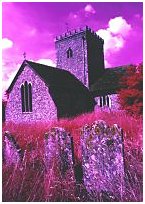
|
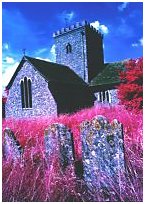
|

|
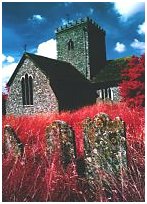
|
To summarise the results of my initial test: this film can give striking colour effects on appropriate subjects. It must be exposed accurately (bracket your exposures in 1/3 stop intervals). Experiment with different filter combinations (orange gave the best results in my test). The control picture, taken without any filters, gave a similar colour effect to the polarising filter, but less saturated, and is not shown here.
Frog OrchidWhenever we visit Kingley Vale we always look out for the Frog Orchids, and have never yet failed to find any. This is a particularly handsome specimen. Of course, the term “handsome specimen” is relative because these plants are just a few inches tall and difficult to see in the grass until you get your eye in - then lots of them appear. The actual magnification on the original 35mm transparency is about x0.7. At these sorts of magnifications the depth of field is very limited so I stopped the lens right down to ensure that all the flower parts are in focus. Even so, the background is not too distracting. Equipment details: Olympus OM4 with Olympus 80mm, Baby Benbo tripod. Film: Velvia (for a comparison of Velvia against the new Ektachrome 100 VS, click here). | |
 |
Water lilyYet another picture of the water lilies in the gardens at Earnley. |
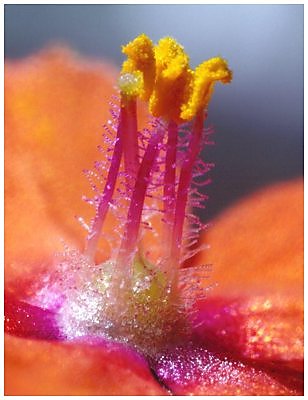 |
Scarlet pimpernel flowerIt's not until you magnify small flowers like this scarlet pimpernel that you can begin to appreciate their beauty. The magnification on the transparency here is about 8x life size, which is sufficient to reveal the glandular hairs on the stamens, and just about resolves individual pollen grains (possibly not visible on the screen but easily seen in the original slide). This was taken with the Olympus 20mm macro lens on the bellows at about half its maximum extension. the flower was clamped in position and the lighting is sunlight pouring in through the window. The exposure was 5 seconds at f16 on Ektachrome E100VS. |
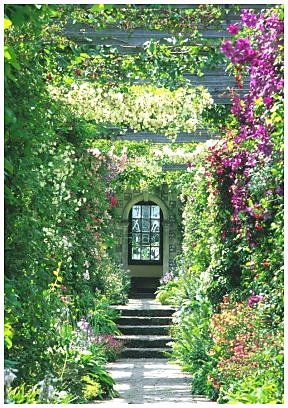 |
West Dean - the PergolaWest Dean Gardens has replaced Pagham Harbour on the course timetable since 1997 because it's got a better range of photographic possiblities (not because it's got a tea room, Ian!). I'd had this particular picture in mind for a few years, and this year I was able to take the image that I had visualised. It's taken with a long telephoto lens to compress the perspective, and leads the eye towards the engraved glass window. The main problem in executing this picture was the visitors suddenly blundering into the scene. |